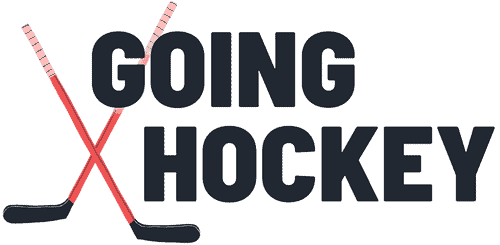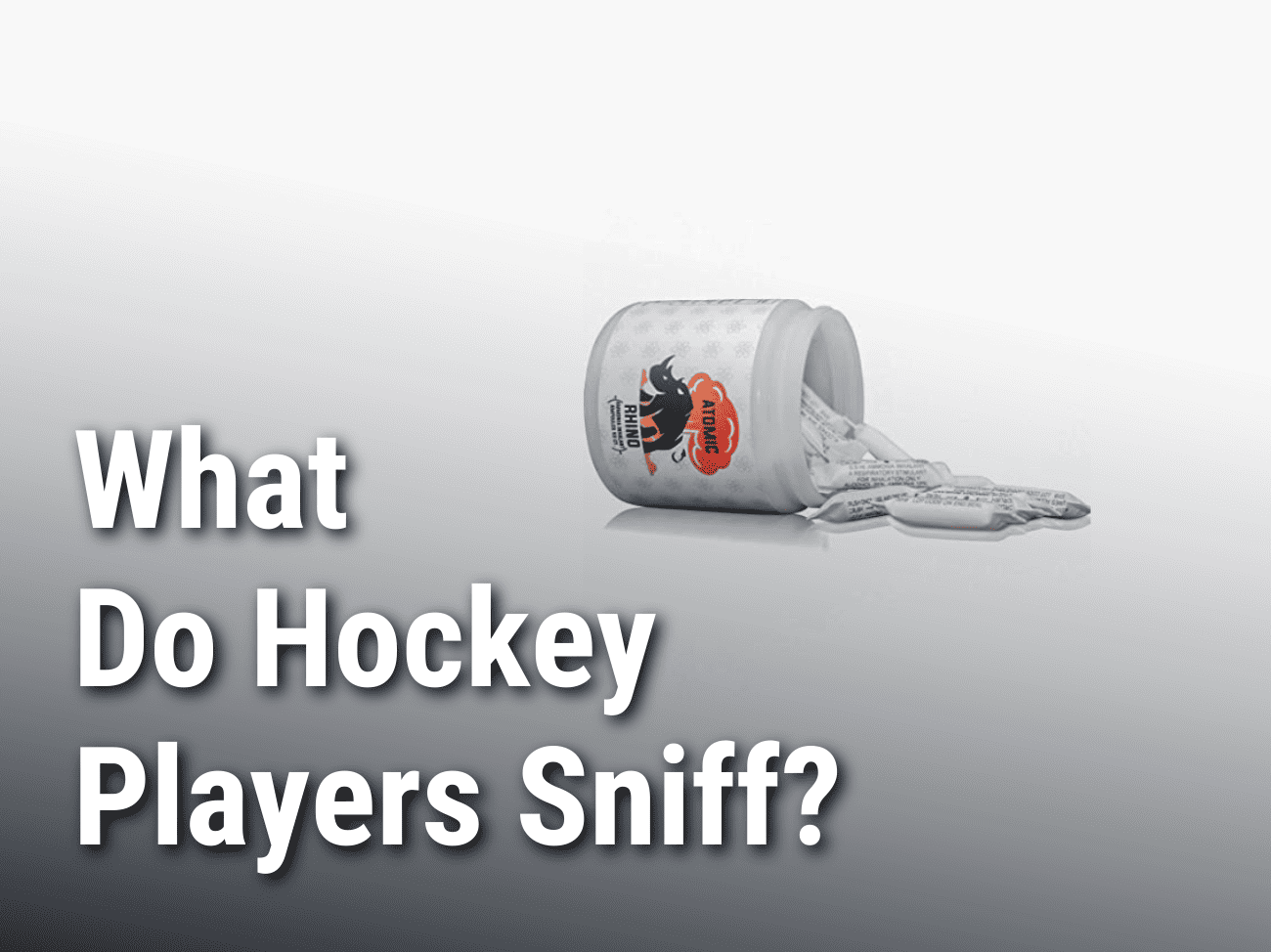The intense and physical nature of hockey demands unparalleled focus and energy from its players. Amidst the fast-paced action, one peculiar ritual has captured the curiosity of fans and spectators: the use of smelling salts.
So, what do hockey players sniff on the bench?
Hockey players sniff smelling salts on the bench in order to feel more awake and alert for the game.
Smelling salts are banned in most boxing competitions as they can mask the symptoms of head and neck injuries, making the fighter seem more alert than they actually are.
What Do Hockey Players Sniff
If you’ve ever seen NHL players putting a sugar-packet-looking substance against their nose and giving animated reactions, you may have wondered, “what are they sniffing?”
Hockey players sniff smelling salts on the bench.

Smelling salts are a type of chemical compound, that act as a kind of stimulant drug. They are known for their pungent odor, which helps to stimulate the senses when inhaled. Smelling salts have been used for centuries as a quick and effective method to revive consciousness or combat lightheadedness and dizziness.
In sports, including hockey, they are commonly used to provide a sudden burst of alertness and mental clarity to players.
What Are Smelling Salts Made Of?
The smelling salts that hockey players sniff are typically a combination of diluted ammonia (NH3), water, and ethanol (C₂H₆O). They have a kind of crystal/powdery texture and usually come in a bottle or as small single-use packets.

Why Do Hockey Players Use Smelling Salts?
There are two main reasons why hockey players sniff smelling salts:
- Increased Alertness
- Ritual
Increased Alertness
One of the reasons hockey players sniff smelling salts is for their physiological effect.
Smelling salts provide an immediate boost to mental alertness, helping hockey players combat fatigue, drowsiness, or the disorienting effects of physical contact. Because the last thing you want to be is “drowsy” or “tired” when playing in a hockey game.

The sharp inhalation triggered by smelling salts stimulates the respiratory system, increases heart rate, and improves concentration, allowing players to stay sharp and focused during intense gameplay.
Ritual
All athletes, not just hockey players, are big on rituals.
Rituals help give you a sense of familiarity, control, and comfort before a game. They help bring you to the present, hone your senses, and cut out distractions. Rituals can act as a kind of signal to get your mind, body, and emotions ready for the game.
Some examples of pre-game hockey rituals are:
- Eating a specific meal. (e.g., peanut butter jelly sandwich)
- Putting gear on in a specific order (e.g., right skate before left skate)
- Pregame, stick handling routine.
- Very specific tape jobs (e.g. no tape on the heel, wax only on the front of the blade)
- Listening to music.
- Being the last person off the ice in warmups.
- Specific stretches during warmups.
Hockey players sniff smelling salts as a kind of pregame ritual. The familiar pungent chemical can help them get zoned in and remind them that it’s game time.
Are Smelling Salts Legal in Hockey?
The smelling salts that hockey players sniff are legal in hockey.
They are widely accepted and commonly used in the sport. The National Hockey League (NHL) and other hockey governing bodies do not have specific rules or regulations prohibiting the use of smelling salts by players. However, it’s important to note that the use of smelling salts is a personal choice and not a mandatory requirement in the sport.

It is interesting to note, however, that smelling salts are banned in certain sports such as boxing because they can mask the symptoms of traumatic brain injuries. The effects of smelling salts can keep a fighter fighting for longer than is deemed safe (relatively speaking) within the sport.
Are Smelling Salts For Athletes Safe?
When used properly and in moderation, smelling salts that hockey players sniff are generally considered safe. However, it’s important to exercise caution and follow recommended guidelines. Smelling salts contain ammonia compounds that produce a strong, pungent odor, which can cause irritation if directly inhaled or applied to the skin.
Therefore, it’s crucial to avoid direct contact with the salts and use them as intended — by holding them a short distance away from the nose to inhale the vapors. This is how you’ll often see NHL players using smelling salts.

It’s worth noting that smelling salts should not be used excessively or as a long-term solution. Prolonged or excessive use may lead to dependency, respiratory issues, or other health concerns. Additionally, individuals with certain medical conditions or sensitivities may need to avoid or limit their use of smelling salts.
As with any substance, it’s advisable to consult with a healthcare professional or sports medicine specialist for personalized advice and to ensure that using smelling salts aligns with your specific health circumstances.
Where To Buy Smelling Salts
The smelling salts that hockey players sniff can be bought on Amazon and Walmart, as well as most lifting stores, and some sports nutrition stores. They usually come as a powder in a bottle or as single-use packets.

They usually cost around $7~$15 an ounce, or $0.60~$1.00 per single packet.
How To Get More Energy For a Hockey Game
Although smelling salts can give your a quick boost of alertness before a game, the effects are short-lived and momentary. If your goal is to increase your overall alertness and energy levels for a hockey game, here are some alternative solutions:
- Quality Sleep: Ensure you are getting enough sleep and establish a consistent sleep routine. Aim for 7-9 hours of quality sleep each night to allow your body to rest and recharge.
- Stay Hydrated: Dehydration can contribute to fatigue, so make sure to drink enough water throughout the day. Carry a water bottle with you and sip regularly to stay properly hydrated.
- Eat Nutritious Meals: Fuel your body with balanced meals that include a combination of complex carbohydrates, lean proteins, and healthy fats. Avoid excessive sugar and opt for whole, unprocessed foods that provide sustained energy.
- Light Physical Activity: Engage in light exercise or physical activity to boost your overall energy levels. Physical activity increases blood flow and oxygenation, promoting alertness and reducing fatigue.
- Manage Stress Levels: High stress can drain your energy. Practice stress management techniques such as deep breathing exercises, meditation, or engaging in activities you enjoy to help reduce stress levels and boost energy.
- Limit Caffeine and Sugar: While a cup of coffee or tea can provide a temporary energy boost, excessive caffeine and sugary foods can lead to energy crashes later on. Consume them in moderation and opt for healthier alternatives when possible.
- Get Sunlight and Fresh Air: Spending time outdoors and getting natural sunlight can improve mood and energy levels. Take short walks outside during breaks or find opportunities to get fresh air.


Leave a Reply